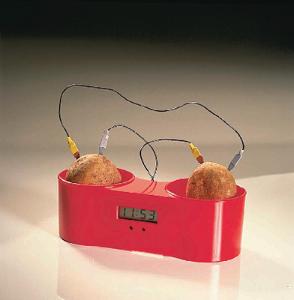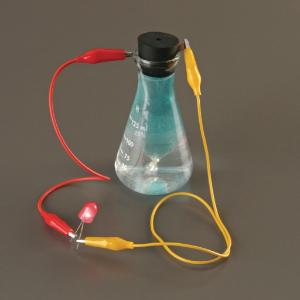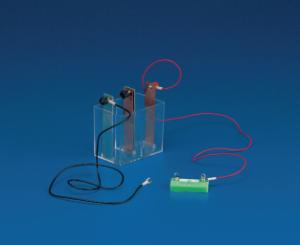A Battery of Hands-On Science Fun with this Free Orange Clock Activity
Give students a boost from using fruit to demonstrate how batteries convert stored chemical energy into electrical energy.
Fill form to unlock content
Error - something went wrong!
Get Your Free Activity
You're in! Thanks for subscribing.
All Grades
Batteries are essential to making our widgets work, and gadgets go! Without batteries, your favorite device has no life. Download the free Orange Clock activity above to jump-start your students’ excitement for lessons about how batteries work. No, seriously, the activity is free of charge!
We’re positive your students will get a boost from using fruit to demonstrate how batteries convert stored chemical energy into electrical energy.
Before jumping into the activity, let’s look at the basics.
What is a battery?
A battery is one or more electrochemical cells in which chemical reactions create a flow of electrons in a circuit. Dry cell is one of many types of electrochemical cells powering our electronic gear. The electrolyte is immobilized as a paste in a dry cell, with only enough moisture for the current to flow. Unlike a wet cell (which usually consists of sulphuric acid and water electrolyte), a dry cell works in any orientation without spilling, making them safer to handle.
It converts stored chemical energy into electrical energy.
The key components of a battery cell include:
- Two terminals made of different chemicals (typically metals), the anode and the cathode;
- The electrolyte, which separates these terminals.
The electrolyte is a chemical medium that allows the flow of electrical charge between the cathode and anode.1
A chemical reaction within the battery causes the anode to build up excess electrons. This causes an electrical difference between the anode and the cathode. The electrons try to rearrange themselves and displace the extra electrons in the cathode. However, the electrolyte ensures the electrons can’t travel directly to the cathode.
When the circuit is closed (with the help of a “conductive path” between the anode and cathode), the electrons can travel to the cathode. Along the way, it sends power to our widgets, gadgets, and devices.
Download the Orange Clock activity above; it’s “AA” fun way to illustrate concepts on electrochemistry, cell potential, metal activity, and anode vs. cathode electrodes.
References: 1. How Does a Battery Work? - MIT School of Engineering
Recommended products:
[StartProductBlock]

Fruit and Potato Clock
LCD clock keeps time using potatoes, soda, or plants to demonstrate an electrochemical cell.
[EndProductBlock]
[StartProductBlock]

Ward's® Chemical Battery Demonstration
An easily constructed battery is built using two chemical solutions and two metal electrodes in an Erlenmeyer flask. Produces 1.5 V that can power a small LED.
[EndProductBlock]
[StartProductBlock]

Primary Battery Kit
A simple, inexpensive little kit demonstrates how a battery works, how current flows, and how chemical energy can be turned into light energy.
[EndProductBlock]
[StartProductBlock]

Battery Electrodes
Shelf Life: Indefinite
[EndProductBlock]
